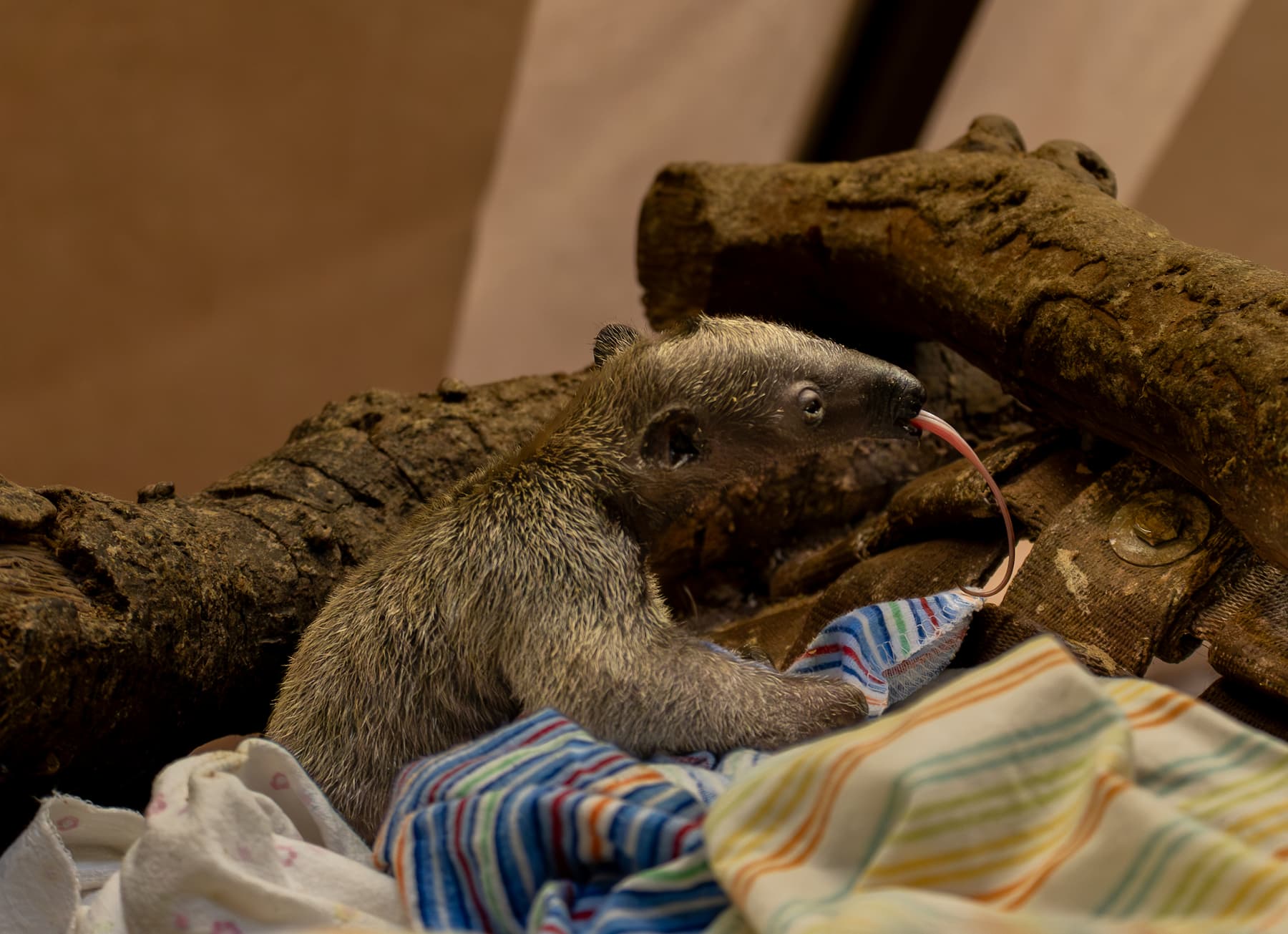The Los Angeles (LA) Zoo has welcomed a southern tamandua pup (Tamandua tetradactyla) born on the evening of August 28, 2023, to first-time parents 8-year-old father Lou and 6-year-old mother Micah. The newborn is currently unnamed, and the gender will be determined later through bloodwork.
Fun facts about southern tamanduas
These medium-sized anteaters1,3:
- Get their name from the language of Tupi, an indigenous tribe from the Brazilian Amazon River valley, and it means “ant-catcher”
- Are also known as lesser anteaters, golden anteaters, vested anteaters, or collared anteaters
- Live in forests, shrublands, and savannas of Colombia, Venezuela, French Guiana, Guyana, Suriname, Uruguay, and Argentina
- Use their sharp claws and prehensile tails to climb trees and hold onto branches to find ants, termites, bees, and honey to eat
- Dig small holes with their claws in ant or termite nests and lick up the insects as they exit
- Don’t have teeth, but rather 16-inch-long tongues, which are covered with tiny rear-facing spines coated with thick saliva
- Can consume 9,000 ants and termites per day as adults
- Are solitary animals that are carried on their mother’s backs for the first few months then in about 1 year venture on their own
“This is a significant birth for the Zoo,” expressed Mallory Peebles, senior animal keeper at the Los Angeles Zoo, in a release.1 “This is the first time LA Zoo visitors will have the opportunity to see the species as a neonate and observe its development over time. We are thrilled with this new addition to our zoo family and its arrival is a testament to the care and wellbeing provided by our entire team.”
According to the Association of Zoos and Aquariums (AZA),2 female tamandua’s gestation lasts between 130 and 190 days, and Micah’s gestation lasted 164 days. During her pregnancy, the animal care team closely monitored Micah’s health, behaviors, and the fetus development.1 Zookeepers taught Micah to voluntarily position to enable veterinarians to perform ultrasounds which helped them avoid the use of sedation. Micah and her baby are bonding and spending time together and she is being an attentive, caring mother.
The pairing of Micah and Lou was recommended by the Southern Tamandua Species Survival Plan, a cooperative breeding program between AZA accredited zoos. Southern tamanduas are currently classified as a species of Least Concern by the International Union for Conservation of Nature.3 However, some challenges the species confront in the wild are habitat loss, wildfires, deforestation, road construction, and traffic.1
References
- The Los Angeles Zoo celebrates its first ever successful tamandua birth. News release. Los Angeles Zoo. September 20, 2023. Accessed September 21, 2023. https://lazoo.org/2023/09/the-los-angeles-zoo-celebrates-its-first-ever-successful-tamandua-birth
- Adams C, Wojtusik J, Swanson S. Association of Zoos and Aquariums. Accessed September 21, 2023. https://annual.aza.org/2020/documents/Adams__Colleen_2020_Poster_Presentation.pdf
- Southern tamandua. International Union for Conservation of Nature. Accessed September 21, 2023.https://xenarthrans.org/species/anteaters/southern-tamandua
